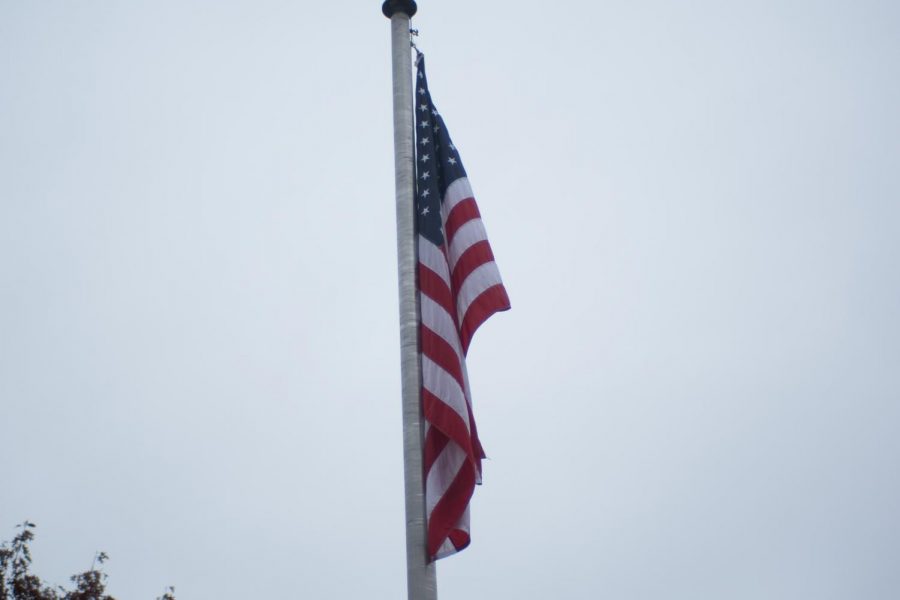Castes: Racism Through a Different Lens
While the American flag may represent freedom for some, many suffer under an oppressive caste system.
November 3, 2021
Caste. Think about this word.
It is commonly attributed to India, and solely India — an enticing, beautiful country plagued with a rigid pecking order determined by citizens’ innate and uncontrollable identities. This inequitable infrastructure is consciously recognized in their society.
It has a name. It is familiar and acknowledged. Consequently, India is not loudly praised for liberty and freedom.
But America is. We commend ourselves for our freedom-oriented, liberated country; on a global scale, we see ourselves in a superior light — celebrating the things that distinguish us from countries like India.
Despite this, there is an undeniable parallel between India’s caste system and American society.
At its roots, a caste system is a hierarchical social structure that infiltrates the inner workings of a society, designating hereditary classes with inherent supremacy or subordination.
Beneath the facade of America’s freedom-oriented and progressive nature lies a prevalent yet disregarded caste system, exposing its hypocritical identity. This hierarchical separation of races — particularly between Black and white people — fosters inequity and violence by handing power to the oppressors and denying it to the oppressed.
An understanding of race is necessary to understand the hierarchy.
Race is scientifically meaningless. Its purpose is merely to justify racism. It is not biological; it is an arbitrary social construct. It is reliant upon our appearance, not our genetics.
The creation of race was deliberate, rationalizing pernicious acts of racism — enslavement, rape, and murder — in colonial America, to appear as a repercussion of the victim’s identity rather than a twisted upheaval of excessive white power.
Race is the byproduct of racism, not vice versa. It is superficial — a concept intrinsic to understanding the irrationality of America’s institutions.
The caste system’s enduring status concentrates power in “superior” demographics — most prominently exhibited as white supremacy and Black inferiority.
Isabel Wilkerson, the author of “Caste: The Origins of Our Discontent”, writes, “Caste and race are neither synonymous nor mutually exclusive. They can and do coexist in the same culture and serve to reinforce each other. Race, in the United States, is the visible agent of the unseen force of caste. Caste is the bones, race the skin.”
Wilkerson implies that race fuels our caste system and acts as a visual determinant of one’s caste. It is the ultimate segregative power, separating us through an optical lens and assigning us a presumed quantity of power.
Think about that. Race — among a myriad of other things, but one of the most influential — determines power.
Power, a combination of control, resources, and ability, is viperous when large amounts are simply placed into the hands of a single demographic. Residing at the pinnacle of the hierarchy, white people are inherently appointed this unchecked power.
Individuals with the least power —and consequently, the least autonomy— occupy the lowest caste. History can attest to the widespread treatment of Black Americans as inferior beings. Beginning when Europeans kidnapped Africans and rebranded them as a commodity, a hierarchy was born.
Slave owners’ excessive power often manifested through brutality.
The physical and mental abuse was condoned, encouraged, and celebrated. It solidified Black Americans as inferior and entrenched them into the rock-bottom caste. Although four hundred years have passed, the racial hierarchy still remains, elevating white people to the top and forcing Black people to the bottom.
In order to maintain the hierarchy, white people abuse their power as the dominant caste to oppress the subordinate ones, often materializing through institutionalized racism.
Whiteness, or what Ruth Frankenburg defines as “a dominant cultural space with enormous political significance, with the purpose to keep others on the margin,” allows white people to assert their dominance and perpetuate discriminatory systems.
Slavery acts as a tangible microcosm of this idea. Wilkerson asserts that “slavery was not merely an unfortunate thing that happened to Black people,” she said. “It was an American innovation, an American institution created by and for the benefit of the elites of the dominant caste and enforced by poorer members of the dominant caste who tied their lot to the caste system rather than to their consciences.”
In a contemporary parallel, gentrification — the transformation of a low-income urban area to a high-income area through an influx of wealthy residents and businesses — is inherently a reaffirmation of white supremacy and the caste system: the displacement of Black people and the creation of a white utopia. Portland, Oregon, the whitest city in America, utilizes gentrification to fulfill a racist agenda.
A historically Black neighborhood, Albina, was gentrified by white people, and consequently, real estate values increased. Many Black Americans could no longer afford their rent and were forced to leave.
In 1999, Black people owned 36 percent fewer homes than a decade earlier in Portland. Predictably, white people owned 43 percent more.
Although subtle and implicit, white gentrification nonetheless served the purpose of forcing the Black community out of neighborhoods and pushing them to the less-appealing and less-resourced outskirts of Portland.
This exact occurrence is not limited to Portland; it is implemented on a national level to displace Black people to low-income neighborhoods while making more space for the wealthy neighborhoods to flourish as white paradises. Between 2000 and 2013, almost 111,000 African Americans moved out of gentrified neighborhoods. This blatant separation of castes, economically and socially, reinforces the hierarchy and purposefully drives ranks apart.
On a similar note, there is an unpalatable yet undeniable truth about members in the lowest caste: loss of bodily autonomy.
Not only is the caste system reinforced institutionally, but also existentially.
The environment America fosters of being commodified, objectified, or literally cut off from one’s bodily experience is ubiquitous for lower castes. White domination is the mastermind behind bodily destruction, and it is alive and well.
On May 25, 2020, Derek Chauvin, a white police officer, loomed over George Floyd and mercilessly suffocated him — exemplifying the caste system’s presence, with Floyd at the bottom. Literally and metaphorically, their distinct roles offer an irrevocable snapshot of the caste system: a black man helplessly held to the ground by the force of a white individual hovering over him, his knee blocking air from keeping Floyd’s heart beating.
One thing is clear: Floyd likely would not have been murdered if he was a member of the dominant caste, for racially-motivated murder does not happen to white people. But his death, and countless others, prove that until the caste system is eradicated, the lowest caste members will continue to ceaselessly fight for their safety.
These events expose the indisputable truth that America is not a freedom-oriented utopia. We are not antithetical to India. While castes may take different forms, the segregational premise is synonymous. And we definitely are not liberated from the racial hierarchy that has pervaded.
Racist institutions that live in silence often yield the most power, and these systems thrive off white ignorance. People in the dominant caste need to pop their naive bubble through inquiry about their inherent power. Investigating the unbalanced power dynamic in America does not take a genius, but rather an open and curious perspective that fosters uncomfortable conversations about whiteness.
But that is only the first step.
Castes are systemic and deep-rooted. The creation of the castes coincided with the creation of our country. They are ingrained into the very bones of America; its skeleton strategically crafted the killings of George Floyd, Breonna Taylor, Ahmaud Arbery, and many other Black lives.
As long as castes exist, Black oppression will continue. Eradicating the caste system calls for reformation.
So, this is a call to action.
A call to support programs that offer Black Americans fair mortgage loans.
A call to protest the displacement of lower castes.
A call to increase police accountability.
A call to dismantle America’s segregational system and reconstruct it from the ground up.
A call for political leaders to address the insidious caste system that plagues our nation.
A call for the dominant caste to use their power to give power back.
A call to reckon with America’s appallingly racist history.
Lastly, it is a call to recognize that America is intentionally — not implicitly — racist.
Neglecting these issues merely strengthens them. Denying the existence of the caste system denies the plights of Black Americans.
It is time for white America to engage in reparations on every conceivable level to craft a culture where the concept of equity is a value deeply held by and for all.





